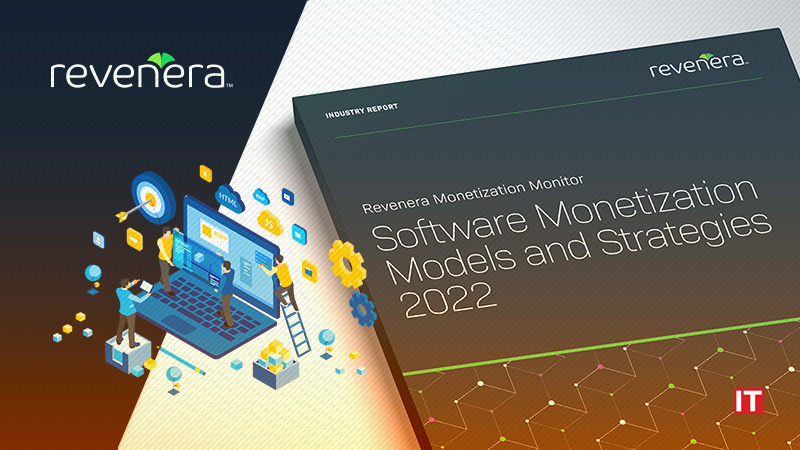Revenera, producer of leading solutions that help technology companies build better products, accelerate time to value and monetize what matters, today released the Revenera Monetization Monitor: Software Monetization Models and Strategies 2022 report. Part of an annual series, now in its fourth year, this report provides product executives at software, intelligent device and IoT companies with benchmarks about digital business models—software deployment and delivery, pricing and monetization.
Also Read: eInfochips and Taoglas Join Forces to Accelerate Global Wireless Innovation
“Software companies have been embracing SaaS and subscription models for years. It’s clear that they’re continuing to accelerate this move, while also maintaining existing products that still hold a lot of customer value and revenue,” said Nicole Segerer, SVP and General Manager at Revenera. “In order to support a hybrid product portfolio and run a successful transformation, suppliers also need clarity into how their products are being used, an area that shows room for improvement. About three quarters of respondents do not yet have an easy way to analyze product usage, potentially putting their strategic initiatives at risk.”
Highlights from the Revenera Monetization Monitor: Software Monetization Models and Strategies 2022 report include:
- The trends toward SaaS deployments and subscription/term monetization models continue for the fourth year in a row, while on-prem software and perpetual licenses continue to hold a strong presence.
- Software-as-a-service (SaaS) is the deployment model showing the greatest anticipated growth in the next 12–18 months, as reported by 59 percent of this year’s survey respondents. Again this year, the deployment model showing the greatest anticipated decline is on-premises (33 percent).
- The monetization model showing the greatest anticipated growth in the next 12–18 months continues to be subscription, as reported by 54 percent. As has been the case in the past, the monetization model showing the greatest anticipated decline is perpetual (33 percent).
- For companies that currently use one monetization model extensively (≥51 percent of their business), subscription and perpetual are tied for the lead.
- Nearly a third (31 percent) of respondents currently use consumption-based models moderately; an additional 14 percent use them extensively.
- Data and analytics are crucial to providing insights into utilization, adoption and engagement.
- Usage data may be applied for feature prioritization or roadmap development, UI/UX design, beta testing, deprecating features, pricing decisions, software version decisions, and piracy tracking. As was the case in 2021, only about ¼ (26 percent) of respondents indicate that their organization can currently gather product usage data “very well.”
- In 2022, 35 percent of respondents reported being able to gather product usage data, but rely on manual processes or engineering work, showing an improvement from 2021, when 44 percent required such interventions.
- In the next 12–24 months, 18 percent plan to gather product usage data, twice the rate (9 percent) reported in 2021.
- Understanding and supporting how customers want to pay for and consume software is crucial, but alignment of price (expense for the customer) and value (its perceived worth to the customer) is an ongoing challenge.
- Suppliers report growing interest in consumption models (with 41 percent planning to implement them) and metered models (with 34 percent planning to implement them).
- Successful implementation of outcome-based, metered and consumption-based monetization models requires that the supplier have clarity into the value being delivered to customers, but only 32 percent of respondents feel that pricing is “totally aligned” with the value provided to customers. This is a small uptick from 30 percent in 2021, but shows continued room for improvement in aligning price with value.
- Top hurdles to aligning price and value include lack of insights to monetize the most valuable features (44 percent), the risk of changing business models (43 percent) and lack of customer acceptance for new monetization models (42 percent).
- Entering new vertical markets is the top driver of planned change to monetization models.
- The top reason for changing licensing strategies in the next 12–18 months is to “better support pricing and packaging changes,” as reported by 35 percent.
- Among organizations that are planning to change monetization models, the top reason for nearly ⅔ (65 percent) is to enter a new vertical market. Other top drivers include moving to an “as-a-service” offering (64 percent) and eliminating revenue leakage (63 percent).
- The top drivers of change among those who changed monetization models over the past two years include implementing a recurring revenue model (52 percent), responding to competitive dynamics (51 percent and improving relations with customers (48 percent).


































